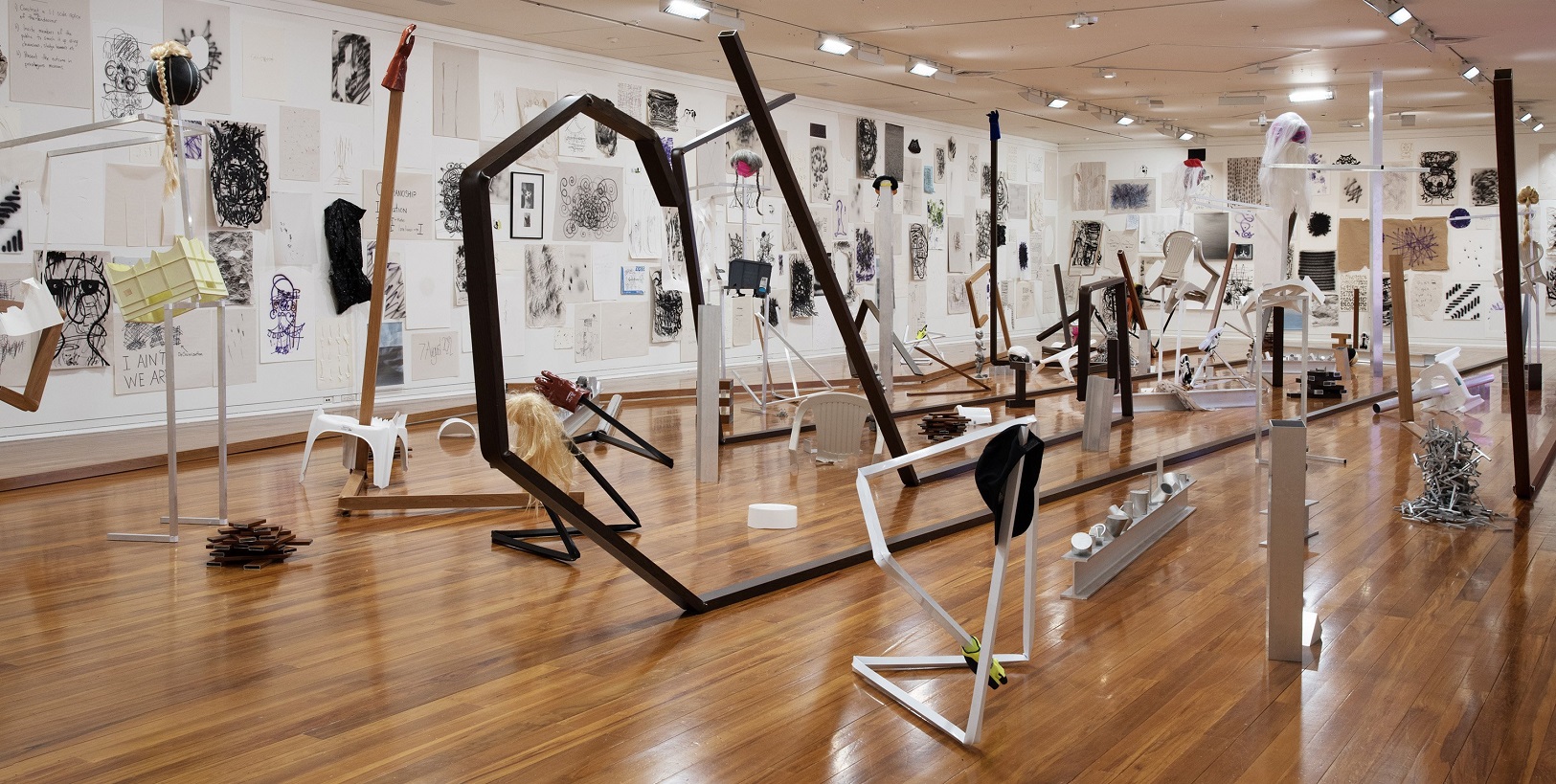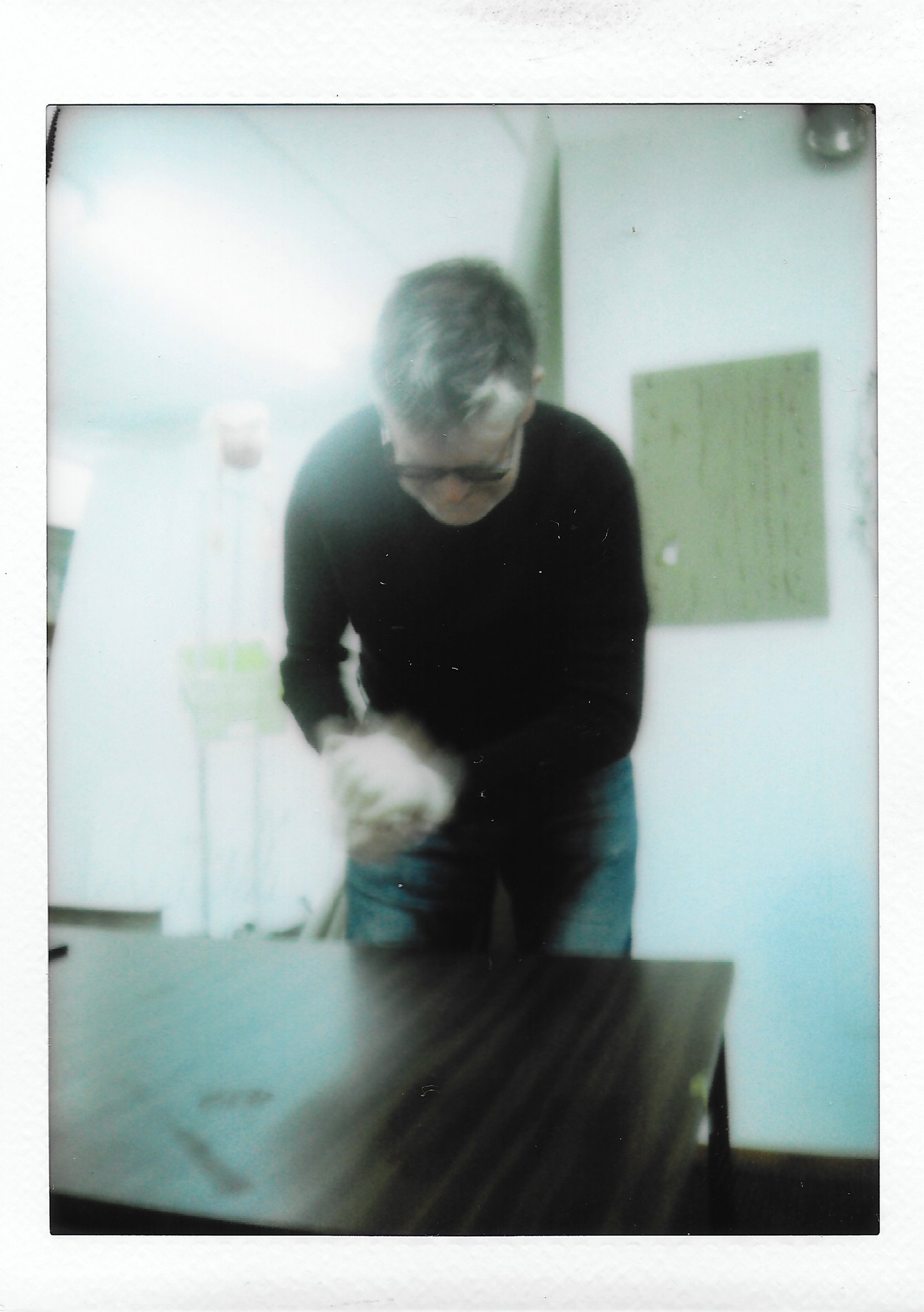
There is always an element of terror when an artist presents their latest work to the public in a solo show no matter how many exhibitions they have taken part in, Auckland artist Peter Robinson says.
He has been exhibiting for 30 years and says it is still nerve-racking and frightening.
"It doesn’t lessen — if anything it gets more."
So in his latest exhibition "Kā Kaihōpara", at the Dunedin Public Art Gallery (DPAG), he decided to invite artists who have supported his career, life and the arts over the years to exhibit with him.
"I wanted to see what it felt like to have that kind of support, to bring people along with you, and the experiment paid off. I found it a very rewarding, comforting experience."
More than 80 artists have exhibited alongside him including many Dunedin artists and teachers and students from Dunedin Art School. He also wanted to acknowledge Antony Deaker (Kāi Tahu, Kāti Māmoe) for the work he has done for the arts in the city and artist Madison Kelly (Kāi Tahu, Kāti Māmoe), whom he is mentoring through the Arts Foundation Te Tumu Toi 2023 Springboard programme.
"It was thinking about changing from an individualistic mode of operating to more community based. It’s a gesture in that direction."
The exhibition was made while Robinson (Ngāi Tahu) was in Dunedin as the Aotearoa New Zealand Visiting Artist for 2023. He created the larger sculptures, did a lot of drawing and worked out the presentation of the exhibition while in the city.
"I did a lot of exploring, feeling it out, looking into new territory, who is there and who came before, which informed my work."
Another Dunedin link is the extensive use of aluminium in the show, which is a nod to the late artist Ralph Hotere whom Robinson was very aware of as a young artist.
"He was a very important figure to me and I was conscious of his activism, particularly in terms of smelting. A lot of the material expresses ambivalence towards this, on one hand, wonderful material and, on the other, very problematic material."
Robinson, who represented New Zealand jointly at the 2001 Venice Biennale and won the Walters Prize in 2008, uses the aluminium crudely, bending it to show a "lovingness towards and a hatred of it". Much of the material, especially the powder-coated woodgrain, was deleted stock or end-of-line material.
"It was leftover stock that I was able to somehow use productively."
There is also a lot of paper in the exhibition as Robinson began thinking about paper’s role in colonial processes.
"As an instrument of colonialism it is, oddly enough, one of the most violent tools with treaty documents and legislation. Again with many of my works in the exhibition there is this violence enacted on the materials, an aggression, a hostility acted on the paper.
"Again there is this love for the material and a hatred for the material enacted."
Bringing the threads together posed a challenge for Robinson. He began thinking about how often artists are entering the unknown.
"The studio can be void. You turn up to it; you kick things around; some things are interesting; some things are not. A lot of time you are uncertain about what is going on, what you are doing. It’s interesting and it’s disturbing or anxiety-provoking.
"You are trying something new. It might not be a new contribution to the world, but it might be a new idea for you as an artist that you can share with someone else."
The idea that what artists are doing is exploring came to him very late in the piece.
"In the last week it came to me this idea of an artist exploring, entering unknown territory that was unfamiliar and developing strategies to deal with that. I started thinking of this notion of artists as an explorer."

"The viewer is invited to construct their own narrative of the work. I think they can trust that it is not deeply arbitrary, that there is someone behind the work that has done some conceptual groundwork but at same time can trust they are allowed to explore the material and construct their own narrative from the installation. It is a matter of imparting creativity to the viewer."
The theme of exploring also ties into the last show Robinson took part in at the DPAG, "Paemanu: Tauraka Toi, A Landing Place". He sees the exhibition as the next chapter.
"Once the waka has landed, this is getting off the waka to start exploring."
So he titled the show Kā Kaihōpara, meaning explorer. It is also a tribute to Paemanu, the Ngāi Tahu artist collective, which has been very "kind and supportive to me", he says.
Robinson sees this exhibition as reaching back to the beginning of his career. In his early days in the 1980s and ’90s, his work played a part in bicultural debate, becoming renowned for its provocative and controversial treatment of racial issues, ethnicity and identity.
"I feel like I’ve met the character that made my early work, the younger man with an attitude who had discovered some things about the world and had few things to say. There’s hostility, aggression, a sense of humour. I feel my early work has returned with a little more circumspection and maturity."
Interestingly, Robinson’s childhood was spent in a very traditional Kiwi way, on a farm at Methven. Yet he grew up with an interest in art "much more so than farming" so went on to study sculpture at the Ilam School of Fine Arts in Christchurch from 1985-89 .
"There is something about that environment that has informed my work, maybe not so much this work formally speaking. In other work, living on the Canterbury Plains growing up informed the way I organised my work often. Often small things were laid across a large plain, intensified by the scale variation and often with nothing on the wall so there was a white backdrop."
While he has great fondness for growing up in the Mid Canterbury region, the flipside of that time and place was that it was very Pākehā and the education system did not offer any te ao Māori (Māori world) or tikanga (customary practices or behaviours).
"As sad as that is, it is kind of productive to reflect upon. It allows for a certain kind of thinking which enables one to wonder how to deal with that problem not so much for oneself as for others, or maybe it’s both."
Robinson is now an educator himself, an associate professor of fine arts and associate dean Māori at the Elam School of Fine Arts at the University of Auckland.
It is something he has done for many years, except for a hiatus when he lived in Berlin, Germany, in the late 1990s-early 2000s, even though he thinks it is a very undervalued profession in New Zealand.
"Teaching is very important to me, as important as my art practice. I really enjoy the craft of teaching and thinking about the craft of teaching and I like how you can make a contribution to the community as a teacher and there is a lot of satisfaction in seeing young people develop not just as artists but as people."
He has included some of his present and past students’ work in the exhibition as well. Robinson is interested in breaking down the hierarchy between teacher and student, artist and non-artist and merging the roles of curator and artist.
"It occurred to me just recently teaching and art practice can be meshed and with this exhibition there are drawings by my current Studio 1 [first year] painting students."
Back in Auckland he is working on upcoming exhibitions, including one in Whangārei next year, although he is not as active as he was while in Dunedin on the residency. Discipline is the key to juggling teaching and his own practice, he says.
"It was amazing — I received so much support from the Dunedin Art School. I got such a good impression of the school. I enjoyed the facilities and dialogue. It’s a partnership with the [Dunedin Public Art] gallery, and the support I got there too, is marvellous."
Looking at the exhibition as part of his career "objectively as an insider" he sees it as one of the most important ones of his career.
"It wouldn’t have happened without that kind of support ... and the time. It is amazing what can happen with that."
To see
Peter Robinson, Kā Kaihōpara, Dunedin Public Art Gallery, until July 23.












